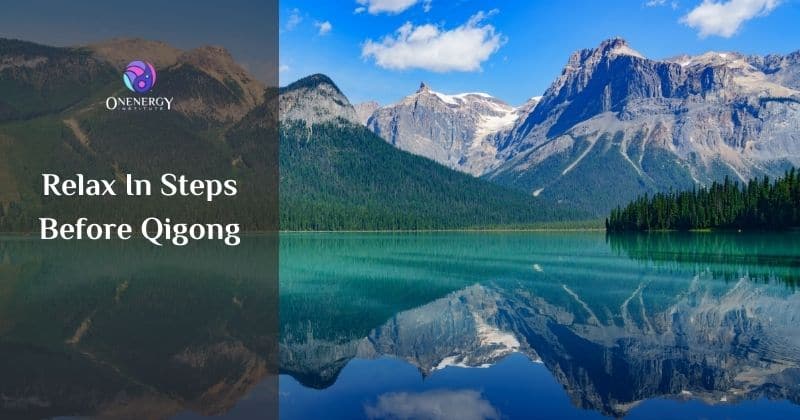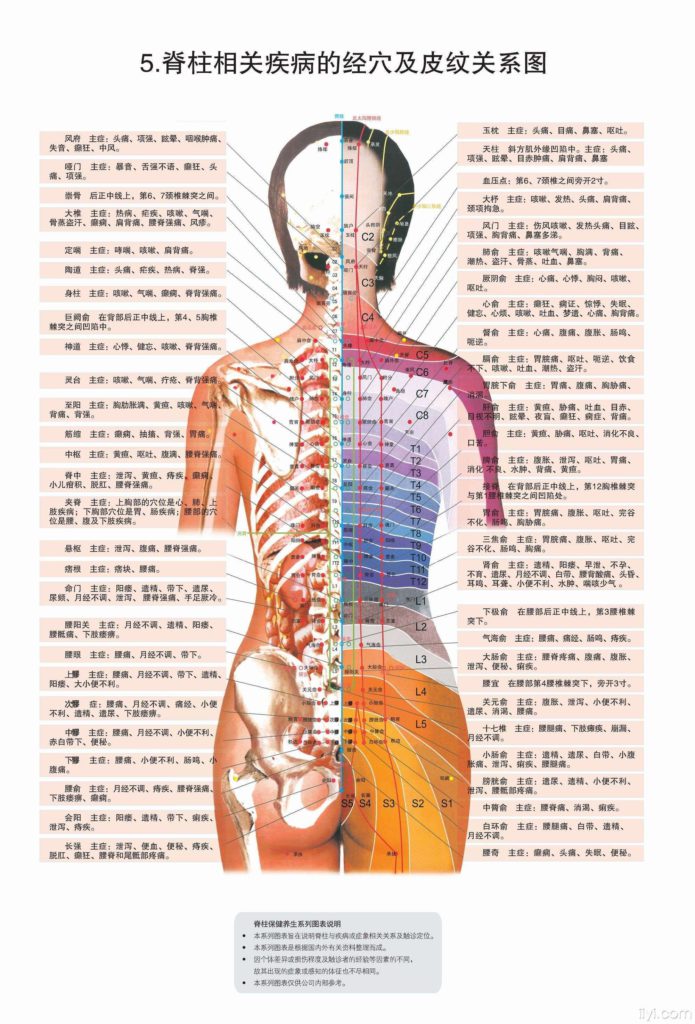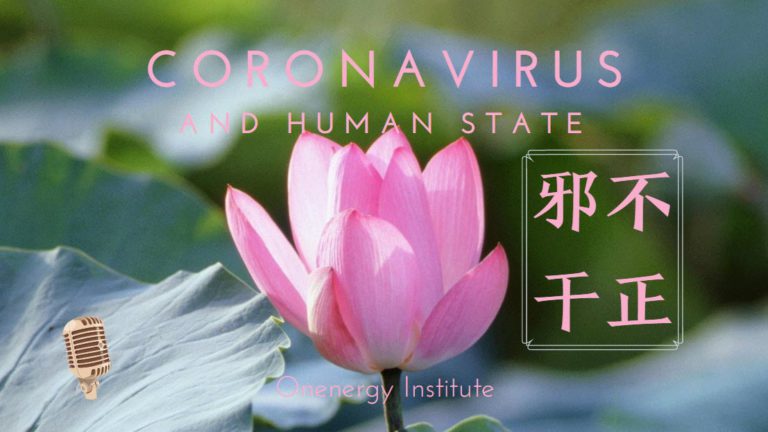How To Relax Body In 4 Steps Before Practice
How to relax your whole body and mind before starting qigong practice? There are four steps involved. We will talk about different energy points in each step.
Whether it’s dynamic Qigong like Qi Dragon Spine or static qigong meditation, you need to first reach a good relaxing state.
Sometimes, the relaxation process can take longer than actual practice. However, you shall never omit it and just do the qigong movement. Otherwise, you are doing physical exercises, not qigong practice.
One of the differences between qigong and fitness exercises is your body and mind’s state. (We cover more in qigong for beginners guide.) When your mind and body are in a relaxing state, they are easily into the qigong state.
If you are not in the qigong state or meditative state, you merely do physical body exercises. You usually need to do some warm-up exercises to relax your muscles first for fitness exercises.
To prepare for qigong practice, you need to relax and open up your body and mind. Here are the four steps of how to relax the whole body and mind:
Step 1: relax Shangen and Yintang
This relaxing step calms down your busy mind and opens your heart. Shangen (山根) and Yintang (印堂) are the two energy points (穴位) that connect to the center of the head.
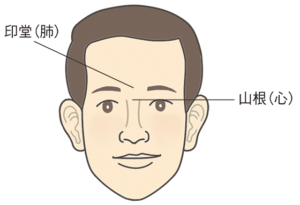
Yintang is between the tips of our eyebrows in the middle. Shangen is located on the nose slope, which is about 1cm below Yintang.
Yintang is known as the third eye. According to the traditional qigong and Chinese medicine system, Shangen and Yintang are connected to our heart and lungs.
Shangen is known as Xinqiao (心窍) in traditional qigong. The word Xinqiao means “the gate to the heart”. When Xinqiao is open, the gate to your heart is open.
Note: The heart in The Heart Philosophy book refers to the true heart. That is different than the organ heart.
How to open Shangen and Yintang
Relax your eyebrows. You can visualize that two eyebrows separate further to the sides. The space between the two eyebrows is getting bigger and bigger. Putting a smile on your face can also do the trick.
Happiness in Chinese is called 开心. The first character 开 means “open”; the second character 心 means “heart”. Ancient Chinese people found that if you open your heart and you will be happy. Now you know how to be happy; just open your Shangen and Yintang two energy points.
Step 2: relax Jianjing
This relaxing step will release stress from your neck and shoulders. Jianjing (肩井) is on the shoulders. Each shoulder has one Jianjing energy point. They are located between Dazhui (大椎) and Jianfeng (肩峰) in the middle.
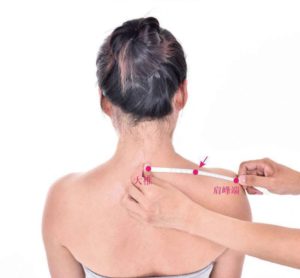
Dazhui is the 7th cervical vertebra. Jianfeng is the highest tip of the shoulder blade. From those two energy points, you are easy to locate the Jianjing energy point.
How to relax Jianjing
Rotate your shoulders gently and smoothly. At the same time, breathe in deeply into your three Dantian down to Lower Dantian. Lower Dantian is in the lower abdomen space between the navel and Mingmen (命门) energy point. Imagine that you breathe in all the way down to Mingmen.
Jianjing is an important energy point on the gall bladder (胆经) meridian channel. It is directly connected to your Lower Dantian (下丹田). When you relax two Jianjing well, our heart and lungs Qi (chi) can flow smoothly down to Dantian. And then your body and mind will experience tranquility.
Step 3: relax Mingmen
This step is very important because it can affect your overall qi flowing in the body. Mingmen (命门) is located on the opposite side of the navel (Shenque 神阙 energy point) on the lower back. It is between the 2nd and 3rd lumbar vertebra.
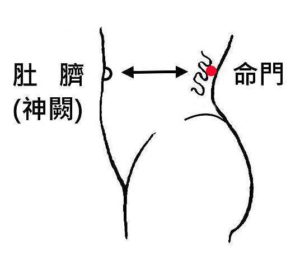
Mingmen (命门) is the energy point that is directly connected to your kidney. Your prenatal Qi or Jing qi 精气 (the energy your mother gave when you were born) decides how strong your body qi was when your life started.
After you were born, you continue consuming your prenatal Qi till it is empty. When you consume it all, your life is done. If you were born with a strong Jing, it might longer support your life. Because ordinary people cannot restore their Jing once it is consumed.
However, through qigong practice, you can replenish your prenatal Qi. But, it can never happen overnight. It requires persistence and consistency.
How to relax Mingmen
When standing, feel your inner Qi pushes your Mingmen backward; when sitting, use your inner force to push your Mingmen a bit forward.
You may find it against your natural body curve. However, this simple posture can change your overall health condition. Because it can help to straighten your spine. When you straighten your spine, your Qi and blood can flow very smoothly throughout the body.
Why relax and straighten the spine
Do you know that almost all physical body problems are related to the spine? Check the spine and disease graph below to get some ideas.
For example, you have much less physical activity and more screen time nowadays. Often, you lower your head and neck for hours to check your smartphones. Therefore, you bend your cervical vertebra for too long, affecting qi and blood flowing from C3 to C7.
You may start with some mild symptoms like a sore neck and shoulder. Gradually, you will have headaches, migraine, high blood pressure, dry eyes, bad eye vision, insomnia, short breath, Alzheimer’s, etc.
Therefore, straightening your spine can help with many body health issues and mental health issues.
Of course, besides loosening Mingmen, there are some qigong exercises to straighten the spine. You will learn them in our Qigong APP.
Step 4: relax hips knees and ankle joints
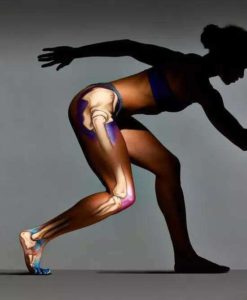
Don’t forget this last step to completely relax the whole body. You see, your legs and feet sustain the whole body weight. They need and deserve good relaxation.
When aging, you can easily feel pain and soreness in your hips, knees, and feet. Those parts need more qi to support your daily body movements. When you were young, you had lots of qi in stock. So you rarely had hip knee or feet problems.
But when you grow older, your qi supply lacks. Then your qi supply cannot keep up with the demand even if it involves basic activities like standing and walking. Sooner or later, you will find issues in your joints.
How to relax hips knees and ankles
Imagine that the space in your hips, knees, and ankles joints enlarge. Then with every breath, Qi fills up those spaces. You will feel your lower body become lighter. And you will feel less body weight.
If you do this relaxing step and qigong exercise every day, your joint issues will be gone quickly.

In Summary
Relaxing the whole body and mind includes four steps. In the article, I have explained how to relax different parts of your whole body in detail. To summarize, here are the goals in each step.
The first step is to open your heart and put your mind in a relaxed state. The second step is to release the stress in your neck and shoulders. The third step allows qi and blood to flow smoothly along your spine. The last step can effectively release stress in the joints.
Usually, you don’t have to remember all the steps. One way is to use the Eight Verses, which will guide you into a relaxed qigong state step by step. In Onenergy Qigong App, we offer both guided practice and group practice. So you can use our App and follow our guide to practice qigong any time you wish.
Download Onenergy Qigong and meditation APP and follow our guide to relax your whole body and mind every day.

